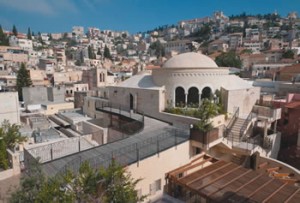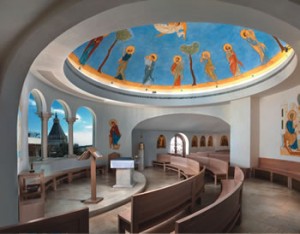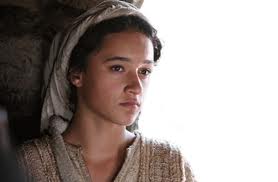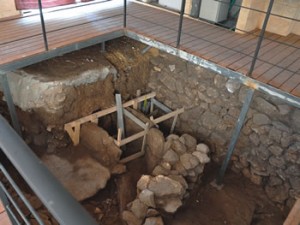Mary of Nazareth International Centre
By Pat McCarthy
 Relations between the churches in the Holy Land are not always harmonious — scuffles with broomsticks are not unknown in sacred shrines — but a project focused on the Virgin Mary has prompted unprecedented co-operation.
Relations between the churches in the Holy Land are not always harmonious — scuffles with broomsticks are not unknown in sacred shrines — but a project focused on the Virgin Mary has prompted unprecedented co-operation.
The MARY OF NAZARETH INTERNATIONAL CENTRE is an ambitious undertaking in the heart of Nazareth. Using the latest multimedia technology, it presents Mary’s place in the history of salvation in a way that reaches out not just across denominational boundaries but to the Jewish and Islamic faiths as well.
When the centre opened in 2011 it had received the support of the 12 major Christian churches of the Holy Land.
“Never in history have all the Christian churches of the Holy Land — Catholic, Orthodox and Protestant — united in such a way to support the same project,” said Bishop Giacinto-Boulos Marcuzzo, the Latin Patriarchal Vicar for Israel.
Bishop Marcuzzo, who is based in Nazareth, described the unity created around the project as “a small miracle”.
Nazareth — the largest city in Galilee — is the place of the Annunciation, and the Mary of Nazareth Centre is just across the street from the towering Basilica of the Annunciation.
In a renovated building from the Ottoman era, pilgrims watch a 55-minute multimedia presentation, offered in 10 languages. It is divided into four parts, each in a separate room: from Creation to Mary’s childhood, from the Annunciation to Jesus’ birth, the 30 years in Nazareth and Jesus’ public life, and from Good Friday to Easter Sunday.
The scope and visual effects — in still and movie photography — are impressive, and the presentation is firmly grounded in Scripture, with no fewer than 224 biblical passages quoted.
For New Zealand visitors there is the added interest of seeing local actress Keisha Castle-Hughes in clips from her role as the Virgin Mary in the 2006 film The Nativity Story.
And a brochure on the centre lists New Zealander Father Justin Taylor, SM, formerly of the Ecole Biblique academic institution in Jerusalem, as a member of the centre’s ‘scientific committee’ of Marian specialists.
Other exhibits in the centre focus on Mary as a Jewish woman, Mary in the Koran, Mary as a source of Christian unity, and Mary in the tradition of the Eastern Christian churches. There is also a world map of Marian shrines.
The centre is a project of the French Association Marie de Nazareth, which promotes Christian belief through podcasts, websites, television documentaries and media centres. The association plans what it calls ‘franchised’ Marian centres in several other countries, with those in Lebanon, Spain, Mexico, Brazil and Italy already being planned.
It is run by the Chemin Neuf (“New Path”) Community, a Catholic organisation with an ecumenical membership, founded in the French city of Lyon.
Archaeological Site
Almost inevitably for a Holy Land project, construction work on the site uncovered archaeological remains. When the Israel Antiquities Authority investigated, it identified these as from a house at the time of Jesus.
Nazareth at the time probably had a population of between 400 and 1200, so it might have had as few as 100 houses. It is almost certain that Jesus knew the house that was discovered, and he might even have visited it.
The remains of the house have been conserved within the Mary of Nazareth centre.



 Entries(RSS)
Entries(RSS)